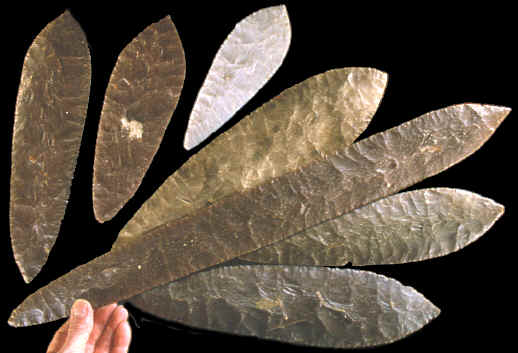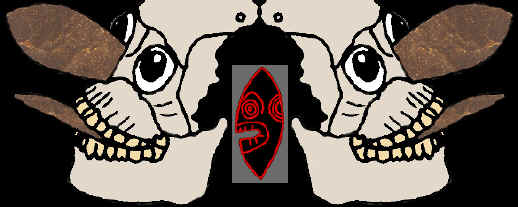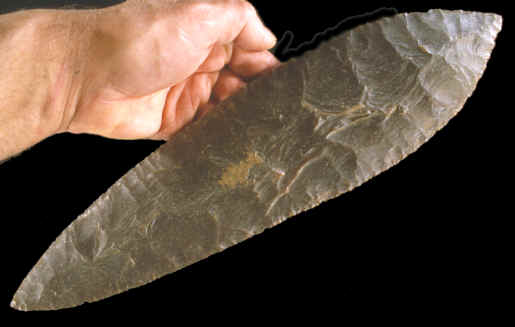|
|
|
"Flint knife" day in the Aztec ritual calendar is associated with the Aztec god Tezcatlipoca. Tezcatlipoca represents the dark side of existence and presides over the north sector of the universe in a place called Mictlan or Mictlampa where fleshless skeletal beings reside in a place of the dead. People who died natural deaths would go there after passing through 9 unpleasant places, such as, the place where the hearts of the dead are eaten, the place where people are shot down with multitudes of arrows, the place of the obsidian-sharp winds, etc., etc. |
|
|
Tezcatlipoca, who represented "flint knife" day, was one of the most powerful and influential Aztec gods and was also the god of temptation. He was associated with annihilation that can bring rebirth. He wears a tiger skin (ocelot) and an obsidian blade which represents the cold, black, biting winds of the north. Tezcatlipoca literally means smoking mirror. He is shown wearing a smoking obsidian mirror on his head and one in the place of one of his feet. This peculiar weapon gave off smoke that killed his enemies. |
|
|
|
|
Aztec bifaces are directly connected with those illustrated in the codices and stone engravings and were involved in complex Aztec religions mythology. Several "personified" examples of bifaces were found during the excavation of the Great Temple in Mexico city. They were made of the same materials and are the same shape as the examples illustrated in this article, although most of these are larger in size. They were inlayed with shell, turquoise, hematite & obsidian and even painted in various designs. Those "personified bifaces" were made to look like the same ones that are engraved in stone and drawn in the old Aztec manuscripts. |
|
|
|
|
Aztec bifaces have no competition when it comes to a mythological background, cultural drama and skilled craftsmanship. They represent some of the most skillfully flaked and artistically personified, stone bifaces ever manufactured within any Stone Age culture in the world. |
|
|
"REFERENCES"
1973,
Perino, Gregory, "Artifacts Made From Tabular Flint", Central
State Archaeological Journal, April #2, pp. 60-65. |
|



